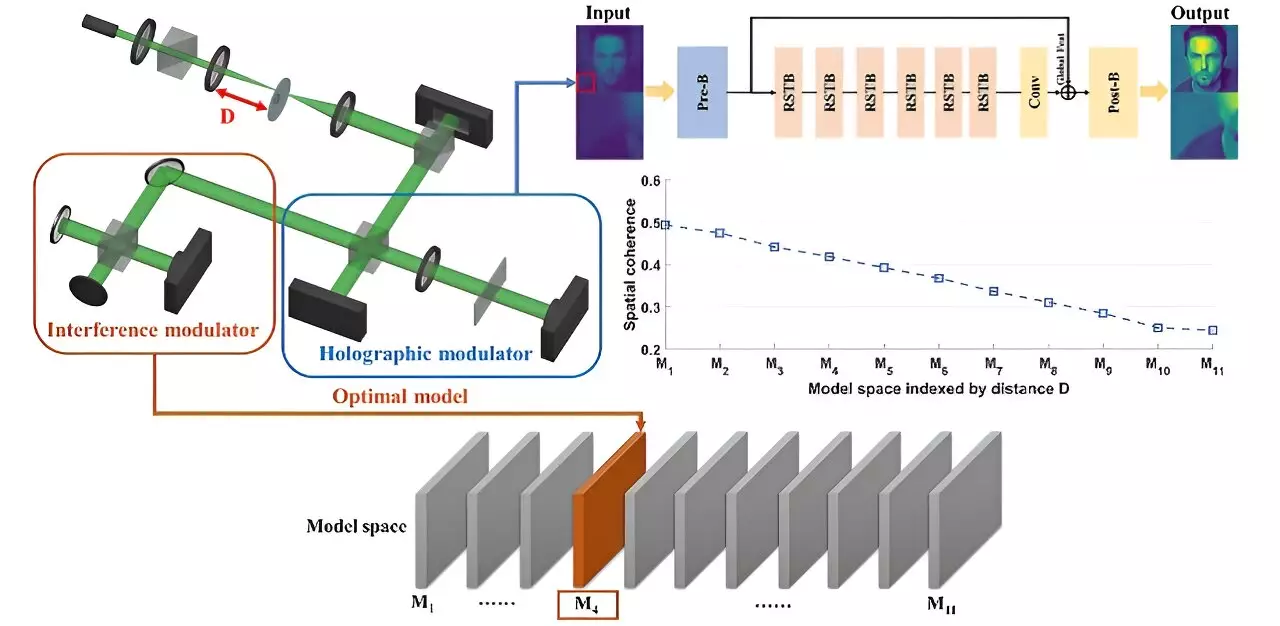Holographic imaging has long been plagued by distortions in dynamic environments, making it difficult for traditional deep learning methods to adapt. These methods often struggle because they are designed to rely on specific data conditions, which limits their ability to handle diverse scenes. However, researchers at Zhejiang University recognized this problem and set out to find a solution.
In their study published in the journal Advanced Photonics, the researchers explored the intersection of optics and deep learning. They discovered that physical priors play a critical role in ensuring the alignment of data and pre-trained models. Specifically, they focused on the impact of spatial coherence and turbulence on holographic imaging.
Spatial coherence refers to how orderly light waves behave. When light waves are chaotic, holographic images become blurry and noisy, as they carry less information. Therefore, maintaining spatial coherence is crucial for clear holographic imaging. Unfortunately, dynamic environments with turbulence, such as those found in oceans or the atmosphere, introduce variations in the refractive index of the medium, disrupting the phase correlation of light waves and distorting spatial coherence. This ultimately leads to blurred, distorted, or even lost holographic images.
To address these challenges, the researchers developed an innovative method called TWC-Swin, which stands for “train-with-coherence swin transformer.” This method leverages spatial coherence as a physical prior to guide the training of a deep neural network. The network, based on the Swin transformer architecture, excels at capturing both local and global image features.
To test the effectiveness of TWC-Swin, the researchers designed a light processing system that produced holographic images with varying levels of spatial coherence and turbulence conditions. These holograms, based on natural objects, served as training and testing data for the neural network. The results were promising, showing that TWC-Swin successfully restored holographic images even under low spatial coherence and arbitrary turbulence. In fact, it outperformed traditional convolutional network-based methods. Additionally, TWC-Swin demonstrated strong generalization capabilities, meaning it could be applied to unseen scenes that were not included in the training data.
This research marks a significant advancement in addressing image degradation in holographic imaging across diverse scenes. By integrating physical principles into deep learning, the study sheds light on the successful synergy between optics and computer science. Moving forward, this work opens up possibilities for enhanced holographic imaging, allowing us to see clearly even in turbulent environments.
As we look to the future, the findings from this study pave the way for improved holographic imaging. By harnessing the magic of light and incorporating physical priors into deep learning methods, researchers can overcome the challenges posed by distortions in dynamic environments. This breakthrough has the potential to revolutionize holographic imaging, granting us the ability to visualize and understand the world more clearly.


Leave a Reply